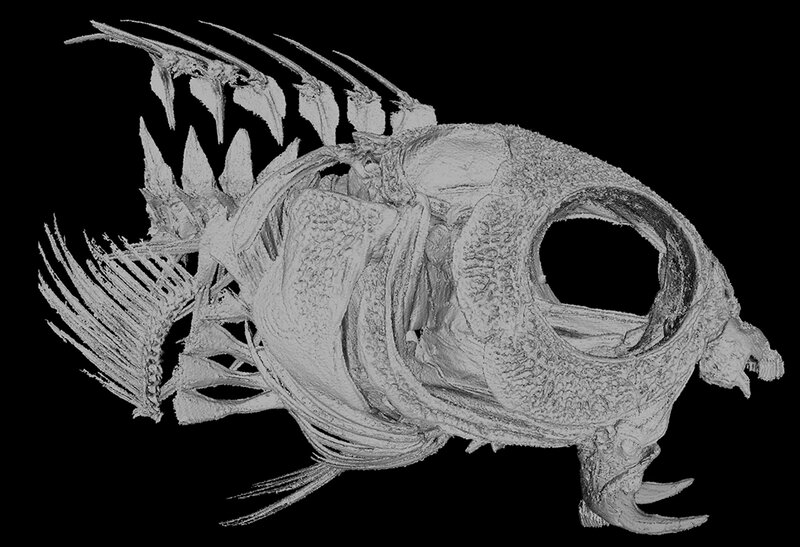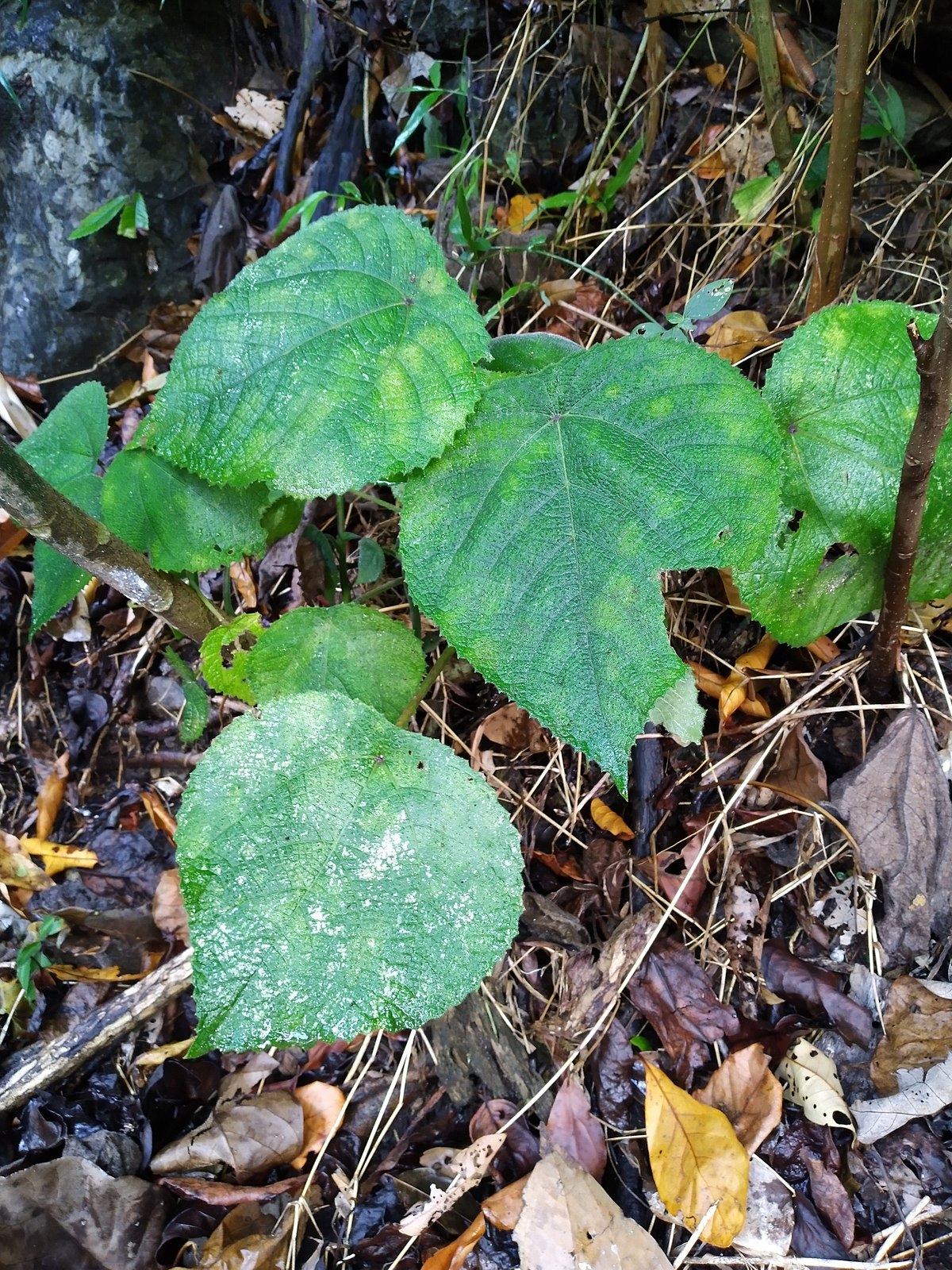David Wooderson
Bluelighter
- Joined
- Feb 11, 2015
- Messages
- 1,344
[h=1]A Tiny Fish With Fearsome Fangs Uses An Opioid-Like Venom To Escape Enemies[/h]
March 31, 20171:38 PM ET
Madeline K. Sofia

The deceptively adorable fangblenny is only 2 inches long and lives in places like Australia's Great Barrier Reef.
Anthony Romilio/University of Queensland
Don't be tricked by their appearance, fangblenny fish are the ocean's cutest jerks.
The fish are 2 inches long and live in places such as Australia's Great Barrier Reef. They make their living by nibbling on the scales and fins of bigger fish.
They sneak around and "carve out chunks of larger fish unsuspectingly" says Bryan Fry, an associate professor at the University of Queensland in Australia, "It's a really really uncool way to do it."
When they are caught and swallowed up by a predator, the blennies literally bite their way out of its mouth. The venom disorients the bigger fish, and the blennies escape to freedom.
Fry leads a group of researchers that has learned more about how venomous fangblennies do their thing.
The first step was to get some venom from the fangblenny fangs. Researchers had to pull the blennies out of a fish tank using a net. Then "we would just put a little cotton swab in front of them and they would instantly bite it and seconds later they were back in the water," Fry says.

Ouch. Fangblennies have two large hollow fangs that deliver venom.
Richard Smith/OceanRealmImages.com
His group studied the chemical makeup of the blennies' toxin. The venom contains components similar to those found in the venom of scorpions. Surprisingly, it also contains an opioid peptide similar to those in painkillers. Their findings were published in the journal Current Biology on Wednesday.
When the researchers injected the blenny venom into mice, it didn't seem to cause the mice any pain.
This came as a big surprise, Fry says. "We expected that ... it's a defensive venom, so it's going to hurt like every other defensive venom," he adds.
Fangblennies need a defense because taking chunks out of big fish is a dangerous sport. Sometimes, when the blenny tries nibbling on a big fish, the big fish bites back, swallowing the blenny whole. When that happens the fangblenny literally chews its way out of the fish's mouth.
Fry believes the venom causes the larger fish to become dizzy. The disorientation allows the little fang-fish to give it the slip.
"Dizziness brought about by low blood pressure is a very common side effect for any kind of opioid. In this case, the side-effect is what's being used by the blenny," he says.
Fry says studying the unique opioid peptides in the fangblenny venom could be beneficial in the future. He thinks it's possible that researchers could stumble on a useful opioid drug.
"If you have one that's a bit less potent but a lot less addictive than something like Vicodin, that's already going to be a good thing."
According to Fry, that's one of the many arguments for conserving places such as the Great Barrier Reef.
"You have these beautiful little fish that could potentially yield the next wonder drug, but we can't do that if these animals aren't around."
http://www.npr.org/sections/thetwo-...s-uses-an-opioid-like-venom-to-escape-enemies
March 31, 20171:38 PM ET
Madeline K. Sofia

The deceptively adorable fangblenny is only 2 inches long and lives in places like Australia's Great Barrier Reef.
Anthony Romilio/University of Queensland
Don't be tricked by their appearance, fangblenny fish are the ocean's cutest jerks.
The fish are 2 inches long and live in places such as Australia's Great Barrier Reef. They make their living by nibbling on the scales and fins of bigger fish.
They sneak around and "carve out chunks of larger fish unsuspectingly" says Bryan Fry, an associate professor at the University of Queensland in Australia, "It's a really really uncool way to do it."
When they are caught and swallowed up by a predator, the blennies literally bite their way out of its mouth. The venom disorients the bigger fish, and the blennies escape to freedom.
Fry leads a group of researchers that has learned more about how venomous fangblennies do their thing.
The first step was to get some venom from the fangblenny fangs. Researchers had to pull the blennies out of a fish tank using a net. Then "we would just put a little cotton swab in front of them and they would instantly bite it and seconds later they were back in the water," Fry says.

Ouch. Fangblennies have two large hollow fangs that deliver venom.
Richard Smith/OceanRealmImages.com
His group studied the chemical makeup of the blennies' toxin. The venom contains components similar to those found in the venom of scorpions. Surprisingly, it also contains an opioid peptide similar to those in painkillers. Their findings were published in the journal Current Biology on Wednesday.
When the researchers injected the blenny venom into mice, it didn't seem to cause the mice any pain.
This came as a big surprise, Fry says. "We expected that ... it's a defensive venom, so it's going to hurt like every other defensive venom," he adds.
Fangblennies need a defense because taking chunks out of big fish is a dangerous sport. Sometimes, when the blenny tries nibbling on a big fish, the big fish bites back, swallowing the blenny whole. When that happens the fangblenny literally chews its way out of the fish's mouth.
Fry believes the venom causes the larger fish to become dizzy. The disorientation allows the little fang-fish to give it the slip.
"Dizziness brought about by low blood pressure is a very common side effect for any kind of opioid. In this case, the side-effect is what's being used by the blenny," he says.
Fry says studying the unique opioid peptides in the fangblenny venom could be beneficial in the future. He thinks it's possible that researchers could stumble on a useful opioid drug.
"If you have one that's a bit less potent but a lot less addictive than something like Vicodin, that's already going to be a good thing."
According to Fry, that's one of the many arguments for conserving places such as the Great Barrier Reef.
"You have these beautiful little fish that could potentially yield the next wonder drug, but we can't do that if these animals aren't around."
http://www.npr.org/sections/thetwo-...s-uses-an-opioid-like-venom-to-escape-enemies

